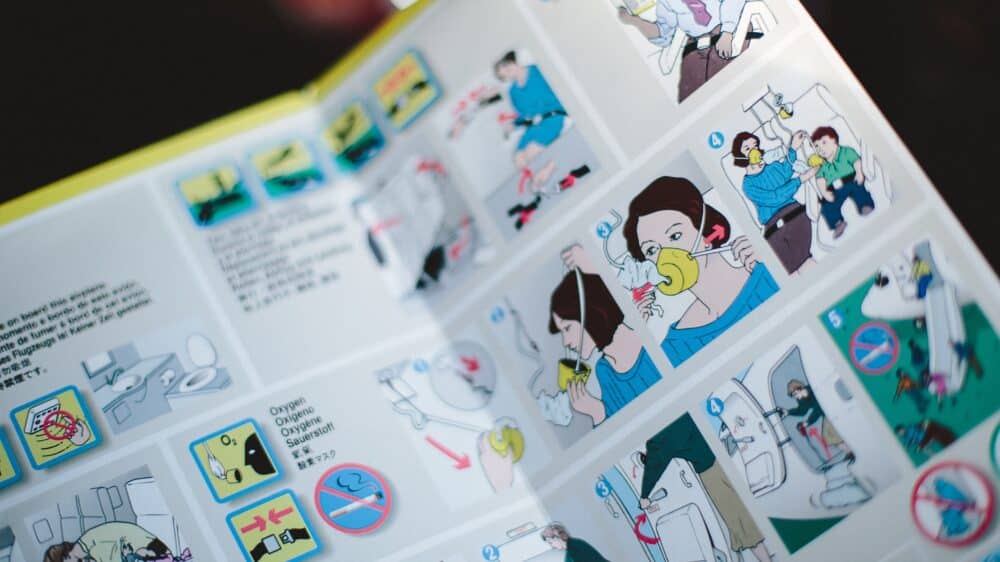Nightmares are a normal part of children’s development, just like night terrors.
It is important to differentiate between a nightmare and a night terror. When a child has a nightmare, it is important for the parent to wake them up and provide comfort. On the other hand, if it is a night terror, the parent must ensure the child’s safety and wait for the episode to pass without waking them up.
To learn how to react appropriately and, most importantly, to understand the difference between having a nightmare and experiencing a night terror, we invite you to read the article, “Nightmares and night terrors: Differentiating to better understand and respond effectively.“
Research has made significant progress, but the causes and recommended interventions to reduce nightmares are still a subject of great interest among scientists worldwide.
Here are the most common causes and potential solutions identified to date.
The “red flags” of emotions
Dreams, whether positive or negative (such as nightmares), seem to be linked to our ability to regulate emotions, solve problems, store information and events in memory, etc.
Nightmares can be:
| For the vas majority, associated with what is happening in our lives, related to our state of mind | Spontaneous (without a specific connection to our inner world or health condition) | Related to a physical condition, such as illness, taking certain medications, or having a fever |
An emotionally charged event or a situation that generates stress in a child can result in a nightmare towards the end of the night. Having experienced something traumatic is also often associated with the presence of frequent and disturbing nightmares.
The exact causes of nightmares are still to be discovered, but one thing is certain: they provide valuable information about the psychological and physical state of children.
Nightmares are thus a great opportunity to become aware of our emotional state or that of our children. For parents, nightmares can serve as red flags and provide an opportunity to bounce back on what is happening in daily life by calmly discussing the nightmare the next day, for example.
In addition to paying attention to the presence of nightmares, there are several tools and resources available to learn how to manage emotions, such as the emotion thermometer, for example. You can also consult the collection of tools to support children’s emotional management from CQJDC to support the development of your child’s emotional management skills.
What to do if nightmares take up too much space?
Having a nightmare in itself is not alarming, as it can allow for adaptation to a situation, emotional management, releasing pent-up emotions, and more.
While occasional nightmares do not require any treatment, we should not turn a blind eye to those that haunt our nights, whether we are a child or a parent. Therefore, when nightmares occur frequently, more than once a week, for example, or when they cause significant distress, it is important to consider them as an alarm system and react appropriately to preserve peaceful nights and days. Nightmares can quickly become a major source of daily stress, affecting the quality of life and potentially leading to a lack of restful sleep.
To reduce the frequency and intensity of nightmares, here are some strategies that have been shown to be effective:
- To provide comfort at night when negative emotions are at their peak. The emotions felt during a nightmare are very real. It is recognized that acknowledging and accepting fear or sadness during the night, just as we would during the day, by helping the child name their emotion and providing reassurance, can have beneficial effects over time. Nighttime comfort can be as simple as offering a warm presence or a hug to avoid disrupting sleep too much. Longer and more in-depth discussions can be saved for the next day, when the child is emotionally available to revisit the negative emotions from their nightmare.
- If nightmares are related to a specific situation or event, it can be helpful to discuss them with the child in order to identify the emotions and stress factors involved and seek appropriate professional help, if necessary (see Resources page).
- Providing a calm environment is conducive to peaceful sleep. For example, reducing sources of stress during bedtime by making it predictable through a short routine. Reducing the “chaos” of the day by practicing a familiar transition, ritual, or a 10-15 minute decompression time allows the brain to calm down and transition into a mental state to facilitate sleep.
- Pay attention to what your child is watching when they are in front of a screen, both directly (appropriate content for their age) and indirectly (continuous television exposure, indirect exposure to news, for example). Nightmares can reflect the emotions (images, words, etc.) experienced through digital content.
- Modify the story of the nightmare… over and over again. You can draw inspiration from the Imagery Rehearsal Therapy (IRT) technique, which is used to treat recurring or traumatic nightmares in both children and adults. The principle is to change the content of the nightmare into something that the child no longer finds terrifying. This can involve making the character funny or giving it a happy ending. You can write the new dream story to read it later, or the child can draw their nightmare and modify it to become a drawing that they enjoy looking at for reassurance. Ideally, the nightmare scenario should be reworked when the child is relaxed and emotionally available on the day following the nightmare. There are variations that include relaxation techniques to be used during the modification of the scenario to help process the emotions of the nightmare.
- If your child has a known physical or psychological condition, it is important to ensure that the nightmares are not related to their condition or treatment. Nightmares can be a side effect of an illness, condition, or medication. Nightmares that significantly disrupt daily life should not be taken lightly, and it’s worth discussing them with your healthcare team.











